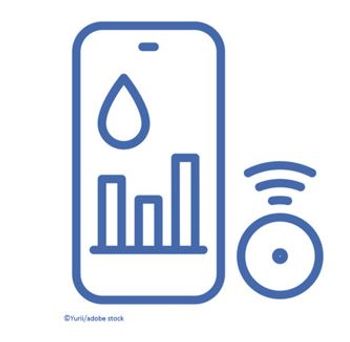
Rx Switching at the Pharmacy: What would you say?
Should you substitute Vigamox with Moxeza? How about Oxycontin with MS Contin? Take our quick, 4-question quiz to find out.
Here’s a story familiar to all of you: you write a prescription for a patient, they take it to the pharmacy, and the pharmacist calls you to ask if they can substitute another drug for the one you’ve chosen. Maybe the patient’s insurance won’t pay for the medication you prescribed, or the copay is higher, or that medication is either unavailable (on backorder) or out of stock and the patient can’t wait. Should you follow the pharmacist’s suggestion to substitute?
Take this quiz and test yourself on these hypothetical pharmacy calls. Of note, all the cases assume that the substitute medication would otherwise be appropriate for the patient; there are no disease-state contraindications, allergies, etc.
1. Would you substitute Vigamox with Moxeza (both moxifloxacin 0.5%)?
Answer: No, at least not without changing the directions.
These 2 medications can often be confused (even by pharmacists) because they appear to be exactly the same thing: moxifloxacin 0.5% ophthalmic solution. However, Moxeza was developed with an added inactive ingredient, xanthan gum, which results in increased corneal penetration and allows twice-daily dosing whereas Vigamox must be used 3 times daily.1
2. Would you substitute Macrodantin (nitrofurantoin macrocrystals) with Macrobid (nitrofurantoin monohydrate/macrocrystals)?
Answer: No, not unless the directions are changed.
Macrobid has two different forms of nitrofurantoin in it; 25% of the formulation is macrocrystals, while 75% is in a monohydrate form that creates a gel when it hits the digestive tract. That gel releases the medication slowly, resulting in an extended duration of action. Macrodantin is only the macrocrystals. Because of that, Macrobid can be dosed twice daily but Macrodantin must be dosed 4 times daily.2,3
3. Would you substitute Oxycontin (oxycodone ER) with MS Contin (morphine ER)?
Answer: Yes, but you might need to change the dose.
Also verify the patient does not have impaired renal function and, because both of the medications are Schedule II, the patient will need a new prescription for the other drug.
I have made this call quite often because insurance companies sometimes will not pay for Oxycontin without prior authorization and will require MS Contin (which is available in generic form) to be used first-line. Of note, MS Contin and its metabolites are cleared primarily by the kidneys, so, depending on a patient’s renal status, a dose adjustment might be required to avoid metabolite accumulation and toxicity.4 Assuming we have accounted for any renal impairment and there is no other allergy or intolerance to morphine, this substitution is reasonable.
Remember the differences in potency, however-30 mg of morphine is equivalent to 20 to 30 mg of oxycodone5 – so the morphine dose may need to be increased to achieve the same level of pain control. I would suggest, if this substitution is made, that you start at the lower end (1:1) and have the patient come in for a follow-up appointment to reassess their pain. I also highly recommend that before substituting any opioid pain medications, especially because they have a high risk of leading to harm in the case of errors, you consult an equianalgesic chart. This one is from the
4. Would you substitute Crestor (rosuvastatin) with Zocor (simvastatin) or with Lipitor (atorvastatin)?
Answer: Yes, but ensure that the pharmacist is changing to a statin and dose at the same level of intensity as your original prescription.
Also, ensure the pharmacist has checked for potential drug interactions.
According to the 2013 ACC/AHA
Another paradigm shift in the 2013 ACC/AHA guidelines is the virtual elimination of non-statin therapies in the management of hyperlipidemia unless the patient cannot tolerate a statin.6,7 This deletion was based on the lack of sufficient evidence for these agents in preventing negative CV outcomes. For example, in a meta-analysis consisting of 39 trials and 117 411 patients, non-statin therapies, including fibrates, niacin, and the experimental cholesteryl ester transfer protein (CETP) inhibitors, failed to demonstrate additional benefit in preventing CV outcomes in patients already receiving statin therapy.8 While CETP inhibitors still show promise,9 at this time the focus should be on receiving only a statin at the correct intensity based on the patient’s disease states and tolerability.
One word of caution: the potential for drug interactions is highest with Zocor. In fact, there are numerous medications that are contraindicated, depending on dose, with Zocor due to significant risk of toxicity. A full description can be found on the
References:
1. Muckley E. Are we gaining ground on ocular infection? Review of Optometry.
2.
3.
4. Brown S, Lascarides P, Stickevers S.
5. Pain Assessment and Management Initiative. Pain management and dosing guide.
6. National Lipid Association. Overview of clinical guidelines in lipid management.
Accessed October 26, 2018.
7. Grundy S. Then and now: ATP-III vs. IV. American College of Cardiology.
8. O’Riordan M. No clinical benefit in raising HDL with existing therapies, meta-analysis shows. Medscape.
9. Tall AR, Rader DJ.
Newsletter
Enhance your clinical practice with the Patient Care newsletter, offering the latest evidence-based guidelines, diagnostic insights, and treatment strategies for primary care physicians.

















































































































































































































































































